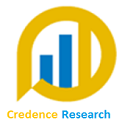Increasing Use Of Electronic Content In Vehicles Aiding The Automotive Software Market Growth Positively
According to a new market research report published by Credence Research “Automotive Software Market (Software Type – Autopilot Software, Navigation Software, Entertainment Software, Car Safety Software, Connectivity Software, Auto Mechanical Software; Vehicle Type – Passenger Vehicle and Commercial Vehicle; Electric Vehicle Type – Battery Electric Vehicle (BEV), Hybrid Electric Vehicle (HEV), Plug-in Hybrid Electric Vehicle (PHEV)) – Growth, Future Prospects and Competitive Analysis, 2018 – 2026”, the automotive software market was valued at US$ 16.24 Bn in 2017 and expected to reach US$ 78.62 in 2026 growing at a CAGR of 19.2% during the forecast period from 2018 to 2026.
Browse the full report at https://www.credenceresearch.com/report/automotive-software-market
Market Insights
The automotive software market stood at US$ 16.24 Bn in 2017 and expected to grow at a compounded annual growth rate (CAGR) of 19.2% during the forecast period from 2017 to 2026 and reach US$ 78.62 Bn in 2026. With technological advancements, the automotive industry is transitioning from hardware to software defined vehicles. In coming years, the average software and electronics content per vehicle is expected to increase drastically. Innovations are happening in Advanced Driver Assistance Systems (ADAS), autonomous drive, vehicle electrification and digital cockpit technologies among others.
Moreover, there are several trends impacting the automotive electronics which in turn is creating demand for compute platform requirements, highlighting the importance of security and functional safety and changing vehicle architectures. In addition, several workloads in the vehicle such as telematics, ADAS features and infotainment can all require connectivity outside the vehicle. Similarly, rising connectivity requirements will also increase the need for security requirements in vehicles, thereby facilitating the automotive software market growth. This can be understood from the fact that by 2020, it is expected that there will 250 million connected vehicles on the road.
Download Sample research report with TOC and Figures @ https://www.credenceresearch.com/sample-request/59544
The automotive software companies are actively involved in research and development activities in order to address the market competition. For instance, in June 2018, three new safety-certified automotive software products was announced by BlackBerry QNX namely; QNX OS for Safety 2.0, QNX Hypervisor for Safety and QNX Platform for ADAS 2.0. that ease the challenges of creating sophisticated automotive systems to be compliant with ISO 26262. Similarly, Houndify by SoundHound, Inc. was integrated into the latest infotainment system of Mercedes-Benz, i.e., Mercedes-Benz User Experience (MBUX). This will facilitate customized voice control with natural language understanding.
The Asia Pacific market expected to remain the most lucrative investment market for automotive software companies. The region headquarters some of the leading automobile companies such as Toyota, Hyundai, Honda and Suzuki among others. This factor is further contributing to the automotive software market growth in the region. Moreover, countries in the region such as India, China and other Southeast Asian countries have witnessed a high GDP growth in recent years. This would mean a higher net disposable income thereby spurring the demand for passenger cars. These factors in combination are expected to drive the automotive software market growth in the Asia pacific region.
Key players profiled in the report include NXP, Renesas, BlackBerry, Elektrobit, Microsoft, NVIDIA, Airbiquity, Green Hills Software, Wind River and Aricent, Inc. among others.
TOC :
Chapter 3 Market Dynamics
3.1 Market Overview
3.1.1 Global Automotive Software Market Value, 2016 – 2026
3.2 Market Drivers
3.3 Market Challenges
3.3.1 Impact Analysis of Drivers and Restraints
3.4 Key Market Trends and Future Outlook
3.5 Attractive Investment Proposition, by Geography
3.6 Competitive Analysis
3.6.1 Market Positioning of Key Vendors
3.6.2 Key Strategies Adopted by the Leading Players
Chapter 4 Global Automotive Software Market Analysis, by Software Type, 2016 – 2026
4.1 Overview
4.2 Autopilot Software
4.3 Navigation Software
4.4 Entertainment Software
4.5 Car Safety Software
4.6 Connectivity Software
4.7 Auto Mechanical Software
Chapter 5 Global Automotive Software Market Analysis, by Vehicle Type, 2016 – 2026
5.1 Overview
5.2 Passenger Vehicle
5.3 Commercial Vehicle
Chapter 6 Global Automotive Software Market Analysis, by Electric Vehicle Type, 2016 – 2026
6.1 Overview
6.2 Battery Electric Vehicle (BEV)
6.3 Hybrid Electric Vehicle (HEV)
6.4 Plug-in Hybrid Electric Vehicle (PHEV)
Chapter 7 North America Automotive Software Market Analysis, 2016 – 2026
7.1 Overview
7.2 North America Automotive Software Market Analysis, By Software Type, 2016 – 2026
7.2.1 Market Analysis
7.3 North America Automotive Software Market Analysis, By Vehicle Type, 2016 – 2026
7.3.1 Market Analysis
7.4 North America Automotive Software Market Analysis, By Electric Vehicle Type, 2016 – 2026
7.4.1 Market Analysis
7.5 North America Automotive Software Market Analysis, By Country, 2016 – 2026
7.5.1 U.S.
7.5.2 Canada
Do inquiry before purchase the Industry Research Report @ https://www.credenceresearch.com/inquiry-before-buying/59544
Chapter 8 Europe Automotive Software Market Analysis, 2016 – 2026
8.1 Overview
8.2 Europe Automotive Software Market Analysis, By Software Type, 2016 – 2026
8.2.1 Market Analysis
8.3 Europe Automotive Software Market Analysis, By Vehicle Type, 2016 – 2026
8.3.1 Market Analysis
8.4 Europe Automotive Software Market Analysis, By Electric Vehicle Type, 2016 – 2026
8.4.1 Market Analysis
8.5 Europe Automotive Software Market Analysis, By Region/Country, 2016 – 2026
8.5.1 U.K.
8.5.2 Germany
8.5.3 France
8.5.4 Res
Charlie Gefen
Credence Research Inc
gefen.c@credenceresearch.com
https://www.credenceresearch.com

